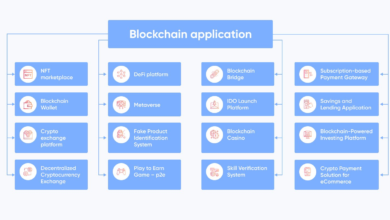Ensuring Transparency and Trust: ICO Governance Models
Introduction
Initial Coin Offerings (ICOs) are a popular method for blockchain-based projects to raise capital. Unlike traditional fundraising, ICOs allow projects to raise funds by issuing tokens to investors. These tokens can represent various assets or utilities within the project’s ecosystem. However, the rapid rise of ICOs has also led to numerous instances of fraud and mismanagement, highlighting the need for robust governance models to ensure transparency and trust. Leveraging insights from experts at https://proficator.org/ can help projects design effective governance frameworks.
Understanding ICO Governance Models
ICO governance refers to the mechanisms and processes by which ICOs are managed and controlled. There are three primary models:
- Centralized Governance: This model involves a central authority making all major decisions. It is simpler and faster but may suffer from a lack of transparency and increased risk of mismanagement.
- Decentralized Governance: In this model, decisions are made by the community or token holders. This approach can enhance transparency and trust but can be slower and more complex to implement.
- Hybrid Governance: This combines elements of both centralized and decentralized models, aiming to balance efficiency with transparency.
Key Components of Effective ICO Governance
Effective governance in ICOs hinges on several key components:
- Regulatory Compliance: Adhering to local and international regulations is critical. Compliance reduces the risk of legal issues and enhances credibility.
- Transparency Mechanisms: Clear and accessible information must be provided to investors. This includes detailed whitepapers, project plans, and regular updates.
- Security and Data Protection: Protecting investor funds and personal data is paramount. Robust security measures and compliance with data protection regulations are essential.
Ensuring Transparency in ICOs
Transparency is the cornerstone of a trustworthy ICO. Several practices can help ensure transparency:
- Disclosure Practices: Comprehensive and clear disclosures in the whitepaper and other documents help investors make informed decisions. This includes the project’s goals, the team’s credentials, and the use of funds.
- Audit and Reporting: Regular audits by independent third parties can verify the project’s claims and financial integrity. These audits should be publicly accessible to maintain transparency.
- Token Holder Rights: Providing token holders with voting rights and participation in decision-making processes ensures they have a say in the project’s development. This can be facilitated through decentralized autonomous organizations (DAOs).
Building and Maintaining Trust
Trust is built through consistent and transparent actions. Key strategies include:
- Reputation Management: Building a credible team and advisory board, and leveraging partnerships with reputable organizations, enhances trust. Transparency in team member qualifications and past experiences is essential.
- Community Engagement: Active engagement with the investor community through social media, forums, and regular updates helps build a loyal and informed investor base.
- Handling Failures and Setbacks: Transparent communication about challenges and setbacks, along with a clear plan to address them, maintains investor trust even during difficult times.
Case Studies of Successful ICO Governance
Examining successful ICOs provides valuable insights into effective governance:
- Ethereum: Ethereum’s ICO raised over $18 million and is often cited as a successful example. Its governance structure involves a blend of centralized and decentralized elements, with the Ethereum Foundation guiding while the community participates in decision-making through proposals and votes.
- Tezos: Tezos faced significant governance challenges but ultimately implemented a robust on-chain governance model. This model allows token holders to propose and vote on protocol upgrades, ensuring that governance is decentralized and transparent.
Future Trends in ICO Governance
The future of ICO governance is likely to be shaped by several trends:
- Emerging Technologies: AI and blockchain technology will play a crucial role in enhancing governance. Smart contracts can automate many governance tasks, reducing the potential for human error and bias.
- Regulatory Developments: As governments and regulatory bodies continue to develop new regulations, ICOs will need to adapt. Staying ahead of regulatory changes and incorporating best practices will be essential.
- Innovative Governance Models: New governance frameworks, such as DAOs, are being explored to enhance transparency and community involvement. These models aim to create more democratic and transparent governance structures.
Conclusion
Effective ICO governance is critical to building and maintaining investor trust. By implementing robust transparency mechanisms, adhering to regulatory requirements, and actively engaging the community, ICOs can enhance their credibility and ensure long-term success. As the landscape evolves, staying informed about emerging technologies and regulatory changes will be key to navigating the future of ICO governance.





